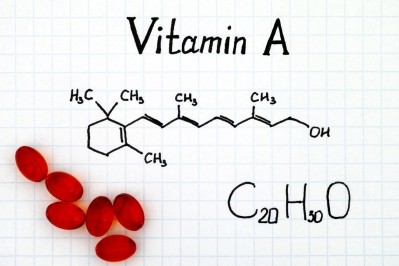Special Edition: Nutrition Regulations
EU dosage regulations could eliminate the therapeutic effect of vitamin supplements

Speaking with NutraIngredients recently, Robert Verkerk, PhD, founder, executive and scientific director of Alliance for Natural Health International (ANHI) noted that the main objectives of the 2002 EU Food Supplements Directive were to ensure the safety of food supplements to consumers and help improve the functioning of the trade in these supplements across the EU’s single market. However, he said, the eventual impact of the Directive could be very different.
Specifically, Verkerk argues that the continuing trend towards restrictive vitamin and mineral dosage limits may effectively render the supplements devoid of any therapeutic benefit and could lead to inadequacy in some cases.
He also suggests that this may be a deliberate attempt to avoid supplements providing an alternative to pharmaceutical medications.
“We all need to be clear why regulation of high dose vitamin and mineral supplements has been on the cards so long," said Verkerk. "There have always been two declared drivers for this in the EU: one’s about consumer protection, the other about improving the functioning of the single market."
“A third motive that’s talked about less is a deliberate yet largely covert attempt by pharma companies to remove from the market therapeutic supplements that compete with drugs," he suggested. “In a society in which people are prevented from accessing the vitamins they need, they will have little option other than suffering nutritional deficiencies or they’ll be forced to use pharmaceuticals."
“The Maximum Permitted Levels reflect precaution layered upon precaution. If you start to apply the regulations, risk from excess will be replaced with risk of inadequacy.”
Flawed approaches
The European Commission’s failure to implement its Article 5 that required setting EU-wide maximum and minimum permitted levels has led to Member States applying their own limits. This has defeated the two original objectives of the 2002 Directive, suggests Verkerk.
“Now, Member States are doing their own thing," he said. "
It’s akin to the Wild West - and the two treasured principles of the EU - consumer protection and enhanced trade within the single market - have fallen by the wayside.”
Maximum Permitted Levels (MPLs) are typically derived taking into account Tolerable Upper Levels established by EFSA (or it’s predecessor the Scientific Committee on Food) and population reference intakes, namely Nutrient Reference Values (NRVs), formerly referred to as Recommended Daily Allowances (RDA). However, the methodology underlying the approaches the Commission has been considering have several problems, Verkerk says.
Firstly, he said, the MPL is based on the most hazardous member of a given nutrient group.
For example: “Iron sulphate is the most toxic form of the supplement, whereas people who choose to take the much safer bisglycinate form will be penalised because their intake will be limited by the more toxic form,” Verkerk told us.
“Right now several EU Member States are targeting vitamin B6, including Sweden, Holland, Belgium and Italy. They’re basing their levels around EFSA’s 25 mg Tolerable Upper Level or TUL, and that means, once population intakes are taken into account, you end up with maximum levels lower than this, sometimes much lower," he continued. "But EFSA’s TUL is based on the pyridoxine forms, not the even safer pyridoxal forms."
"So, for example, any menopausal woman who wanted to take 100 mg or more per day of the bioactive P5P form would be prevented from doing so. She may then be forced to go down the conventional route and use HRT, and risk suffering its side effects.”
Adverse impacts
Verkerk also noted that the severity of adverse impact of exceeding the TUL varies greatly between nutrients and their respective forms - but suggested that this is not reflected in how Member States are tackling restrictions.
For instance, temporary gastrointestinal discomfort from exceeding the TUL of vitamin C is different from potential liver toxicity, which may result from excessive retinol derived vitamin A, he explained.
He also said that much of the EU data being used by EFSA and Member States is 'limited' and this uncertainty has led to large uncertainty factors being applied which lowers the maximum levels considered safe even further.
"There continues to be a failure by EU and Member State authorities to look for evidence from clinical nutrition practice and medical records which show clearly not only the extraordinary safety of these supplements, but also multiple benefits," Verkerk commented.
Finally, he said it is important to realise that benefits and risk will often overlap, suggesting that the current approach preventing consumer access to ‘risky’ intake levels, may also prevent the same or different sub-populations gaining benefit.
The very same scenario occurs with many conventional foods, including oily fish and gluten-containing foods, he noted.
"If you banned these from everyone because a small fraction of the population are sensitive, many would not be able to derive benefit from them," Verkerk argued.
Lack of response
Despite detailed research to identify the problems with the risk analysis methodology, Verkerk has been disappointed with the response from the EC.
“In 2010, we published two key peer-reviewed papers [found here and here] in the journal Toxicology that highlighted the problems inherent in the methods being considered by the Commission to determine maximum levels for supplements and fortified foods.
Within 5 years, the Commission threw the issue into the ‘too hard basket’ and then put it on the back-burner despite its commitment to impose harmonised levels EU-wide, as enshrined in Article 5 of the Directive.”
Frustration with the limits has also prompted supplement manufactures in certain Member States to take legal action against national authorities, he added.
“That’s why companies selling high dose supplements in Sweden and Holland are now challenging their national regulators in the courts."
Quantifiable Risk Benefit Analysis
The current situation also prompted ANHI to develop an alternative approach to micronutrient assessment.
”It’s why we’ve commissioned the Netherlands-based research institute TNO to develop a new model for micronutrient risk/benefit assessment, the fruits of which were published last year in Critical Reviews in Food Science and Nutrition,” said Verkerk.
The model considers the risk of high intake, risk of inadequacy, benefits, severity and incidence of adverse effect in an integrated approach, which examines all available data. The initial study examined iron and folate as demo cases.
“We’re hopeful to soon have raised sufficient funds to commission TNO to specifically put some of the nutrients that are subject to legal challenge through the model to help support the cases,” Verkerk added.
Outlining the fundamental philosophy of the work of ANHI, he concluded
“For us, it’s all about protecting the future of natural healthcare and the fundamental freedoms and choices that go with that. Removing people’s ability to use natural substances therapeutically when they’re proven to be among the safest group of substances we consume - safer even than foods - makes no sense, scientifically, legally or ethically.”















